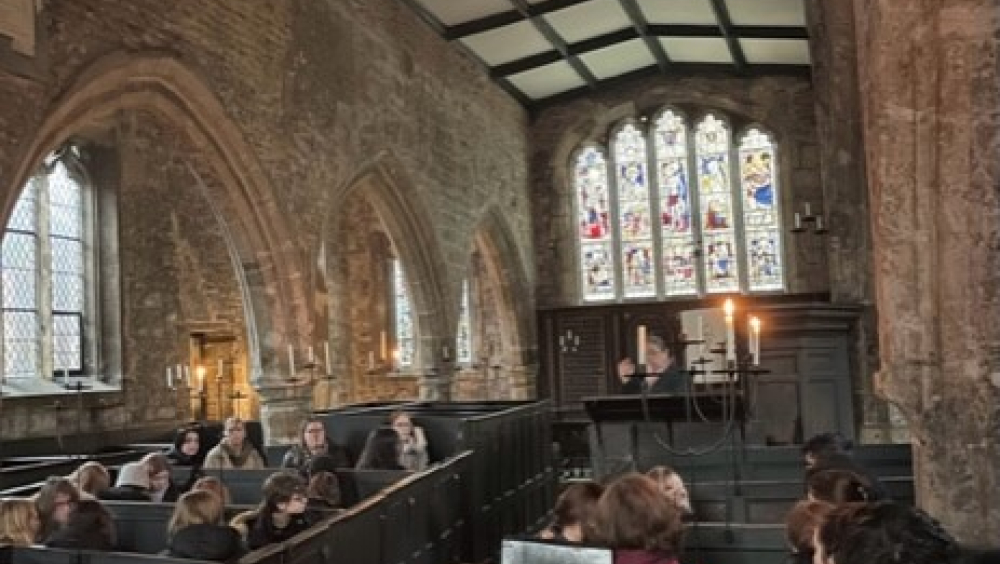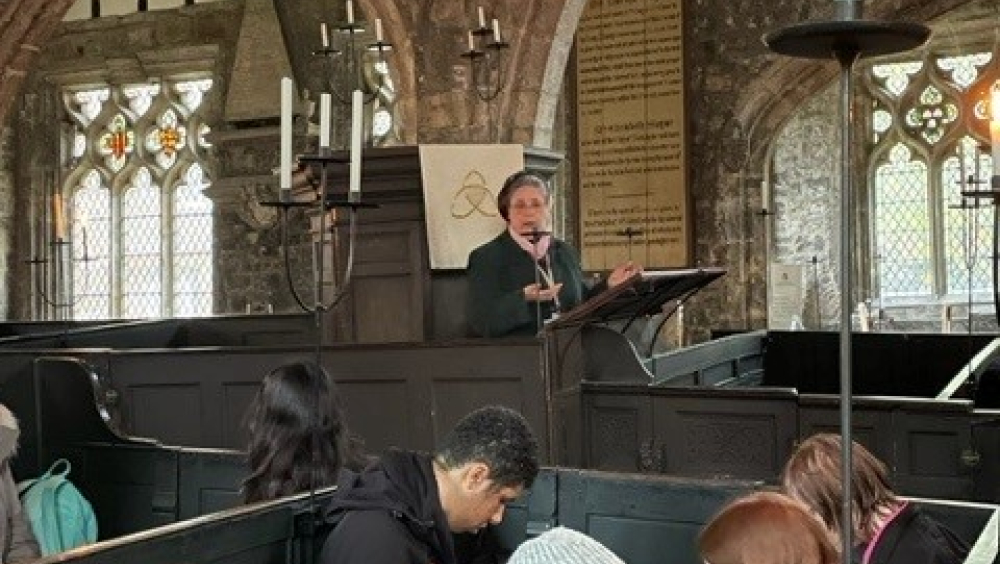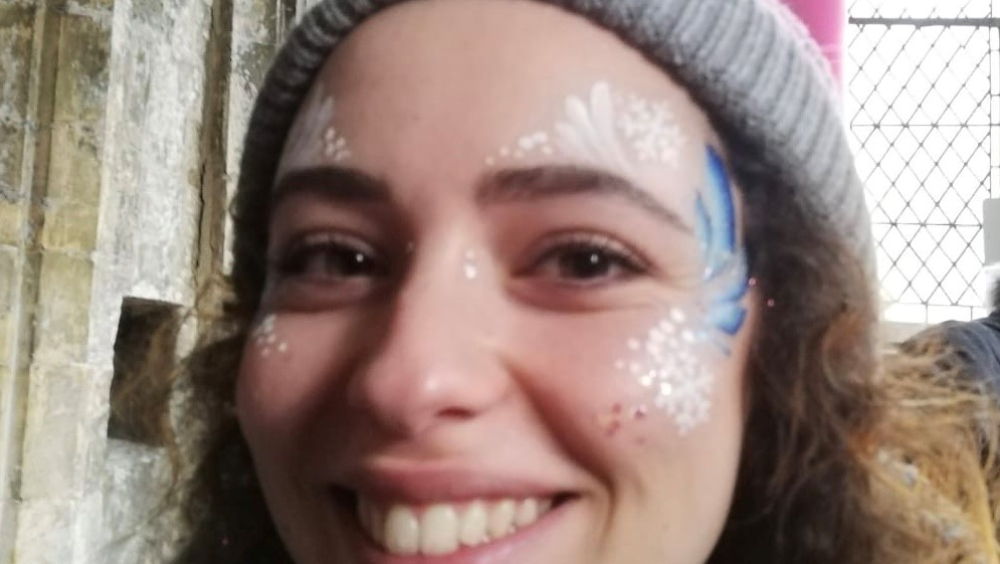European Heritage - A Perpendicular Approach
The story of the Church of England is a tale that is unique in Europe. It’s a tale that’s key to understanding British culture. Within Churches Conservation Trust volunteers are the primary way in which that story is transmitted to the public. Volunteers keep our sites open and accessible.
Until 2023 most volunteers at Holy Trinity church in York were retired members of the York community. Recently we have worked hard to devise a recruitment process that utilises the passion of former academic and current volunteer Dr Pat Cullum. Pat has devised an approach to students in York that has attracted significant interest and through Pat’s work, we have recruited eleven students into our volunteer cohort. This means that students from within and outside of the UK now make up 27.5% of our volunteers.
Our European student volunteers appreciate the opportunity to connect with their local community and English culture through their volunteering. By working with them, we get new perspectives on our venues and a better understanding of the similarities and differences between our sites in England and those across Europe. In addition to welcoming visitors to our site, our volunteers are engaged with researching, explaining and promoting the cultural significance of our buildings and the communities it has welcomed over time.
By diversifying our volunteer cohort and by engaging volunteers from outside the UK we have been able to develop and offer a more welcoming, informative and culturally sensitive tourist offering. We can now better explain nuances of the Protestant Reformation in the UK and the corresponding reformation of the church in Holland and Germany. We are also better equipped to explain the history to visitors from Southern or Eastern Europe who have a very different experience of the history of religion in Europe.
Holy Trinity church, Goodramgate, York is over 800 years old. It has no heating and is lit solely by candlelight. In addition to the cool temperature and warm lighting Holy Trinity’s unique character comes from its box pews, dating back to the 1600s. They offer the only protection from drafts and the cold and survived the Victorian upgrade many churches of Holy Trinity’s age went through.
Documentary evidence references a church on the site at the time of the Norman invasion and given the alignment of the current building plus what is known of the development of the surrounding streets, it is not impossible that there was a building here at the time of the Vikings. This quintessentially English church has survived numerous European encounters.
Through the love and effort of a committed group of volunteers Churches Conservation Trust (CCT) has maintained public access to the church on up to five days per week since our formation in 1969. Currently, there are about 40 regular volunteers who are supported by a single member of staff. Historically, our volunteers have been mostly white-British retirees, recently however that has begun to change.
Over the past 12 months, at Holy Trinity we have been focusing on engaging students as volunteers with a view to diversifying and shifting the demographics of our volunteer base. In 2022, we were joined by Dr Pat Cullum. Dr Cullum studied at the University of York before a career teaching medieval history and researching late medieval gender, piety and the church. As a retired academic, Pat was very well placed to help us to build links with local universities, University of York and York St Johns.
Dr Cullum, through her love and enthusiasm for the building and its history has reached out to students studying in York. By being present on campus and engaging students as they arrive at and leave lectures and by accessing space within the universities Dr Cullum has been able to reach people in their spaces and speak to them on their level. Once hooked, students are invited to Holy Trinity to see for themselves the rich ecclesiastical and cultural history, in situ. The ecclesiastical architectural history of England directly reflects its turbulent political, religious, societal and royal history. This is both through what is there, as evidenced by the perpendicular style of architecture championed by Tudors and seen at other CCT churches including St Michael’s, Cowthorpe and St Martin’s, Whenby and through what is not there but would be across Europe. The lack of highly ornamental interiors and European-style baroque decoration gives English churches a plain and medieval feel that some European students will find quite unfamiliar.
The foreign students who have joined us so far have engaged in a wide variety of activities. Primarily they welcome visitors to our site. The reaction of our Dutch, or Spanish or German visitors who have interesting church facts explained to them in their first language is a joy to behold. They’ve checked the translation and information contained within our European language leaflets, bringing a nuance and realism Google Translate could never match. They’ve helped create posters for events that discuss the uniqueness of English heritage and have been a fantastic source of support to our social media output.
Through the work Dr Cullum has done with local universities and based on the success we’ve had in engaging students Holy Trinity is currently hosting a placement student from the Institute for the Public Understanding of the Past (IPUP) to uncover historic links between monuments at churches run by the CCT and the Trans-Atlantic Slave Trade. We expect this project will uncover a huge range of European connections between our wider estate and the contested history of Europe.
The student volunteers who’ve worked at Holy Trinity over the last 12 months have told us how much they appreciate the opportunity to connect with their local community and broader English culture. Through their volunteering with us they feel they have learnt a huge amount on the history of York but also about its cultural heritage and why English culture is what it is.
Marta Perez (Spain) says “I started volunteering at Holy Trinity since I was looking to connect with York’s history and culture. I love doing something that creates a positive impact in the community while spending time with other volunteers. Their experience and expertise on different areas make an extremely positive contribution to personal growth.”
By working with European students CCT has gained new perspectives on our venues and a better understanding of the similarities and differences between our estate in England and those across Europe. We now have a greater appreciation of the uniqueness of our story and are better informed and equipped to share that story with supporters and visitors from abroad. The experience has also improved our connections with local heritage sites in York. We are working with several sites to prepare an event as part of the Heritage Open Day’s 30th anniversary celebrations this year. The HODs theme of Routes Networks Connections is a perfect opportunity for us to celebrate the amazing connections with Europe this approach has allowed us to understand and made us ambitious to reach out beyond York and over the English Channel/North Sea to our friends in Europe. No doubt, our students will have a key role to play.
CCT works hard to foster links across the European Heritage community and always look to support Heritage Open Days. We are a founding member of Future for Religious Heritage, a European network of organisations that work with religious heritage buildings and we were recently awarded the EU Prize for Cultural Heritage at the Europa Nostra Award, acknowledging contributions that demonstrate excellence in the protection, conservation and enhancement of cultural heritage in Europe. Heritage Open Days have been an integral part of our annual calendar since its inception in 1994 and in that time we have delivered hundreds of HOD events at our churches across England.
The ecclesiastical history of Europe does not follow one single narrative nor does it a harmonious one. The role of religion in European history has been the source of great conflict but also great benefit.
Through the architectural and social history embodied in the buildings within the Churches Conservation Trust’s estate we are well placed to tell this story in a hands-on and immersive way, an opportunity few other organisations are in the position to deliver without an oppressive focus on religious worship or dogma.
By increasing and supporting exposure of European students to the history of ecclesiastical architecture and by using their responses to the exposure to learn and review our interpretation of our buildings we can improve the offer we make to visitors and supporters wherever they come from.
Our approach promotes a welcoming integration of European students into English culture and improves their level of understanding of the historic differences between the national cultures included in our shared histories. By understanding and explaining the differences we will become more aware and better equipped to celebrate the similarities within pan-European heritage.
Significant events of separation and of coming together between European nations and cultures are represented within the walls of our buildings, by bringing students to those buildings to learn we hope to bring the reality of European history to its citizens.


